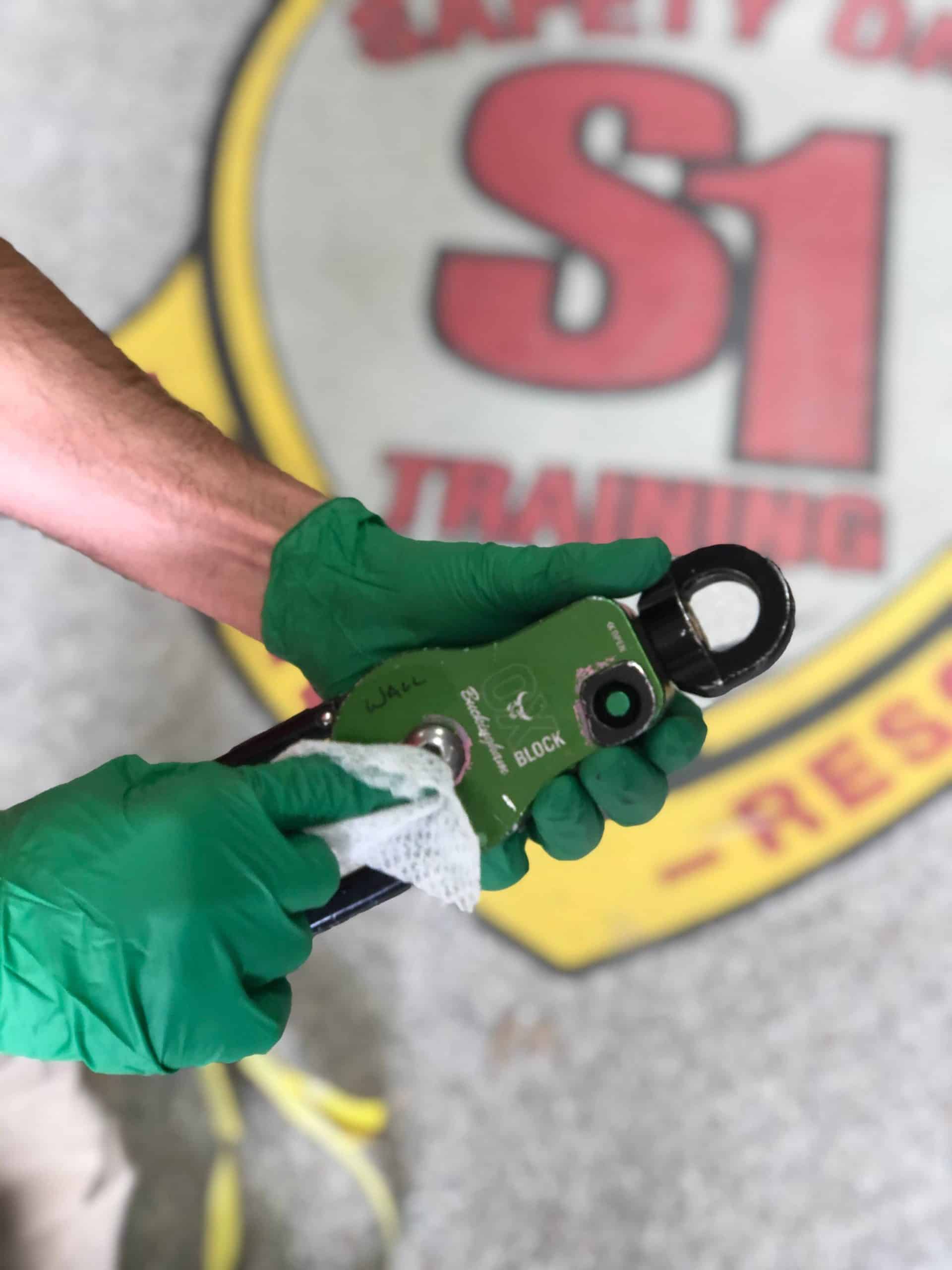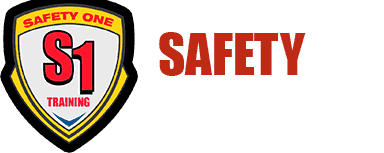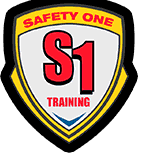
01 Apr How to Clean, Disinfect, and Maintain Your Fall Protection
How to Clean, Disinfect, and Maintain Your Fall Protection
In light of current Coronavirus events, we have been getting several inquiries about how to clean and disinfect personal protective equipment (PPE). Washing your hands for 20 seconds and running a disinfectant wipe over a hard surface are great guidelines from the Center for Disease Control (CDC), however, those means are very limited in washing your own fall protection equipment. To better understand how to clean and disinfect your climbing equipment, it is best to understand what it is we are trying to accomplish.
According to the CDC, there is a difference between just cleaning and disinfecting your equipment. By their definition;
- Cleaning refers to the removal of germs, dirt, and impurities from surfaces. It does not kill germs, but by removing them, it lowers their numbers and the risk of spreading infection.
- Disinfecting refers to using chemicals, for example, EPA-registered disinfectants, to kill germs on surfaces. This process does not necessarily clean dirty surfaces or remove germs, but by killing germs on a surface after cleaning, it can further lower the risk of spreading infection.
When it comes to handling our materials, there are three main categories to fit your inspections into; soft goods, hard goods, and mechanical goods. Soft goods are any woven material such as webbing, rope, stitching, etc… Hard goods, including your d-rings and connectors, are typically made of steel or aluminum. The last category is mechanical components which include the moving components in carabiners, snap hooks and many descent and fall arrest or positioning devices
Soft Goods
Cleaning a harness and rope is not a difficult thing to do. Generally, it is recommended that you use a mild soap with a tub of warm water (less than 90° F) to take any dirt off and odor off. It is also suggested to use a nylon bristle brush or toothbrush to get any tough mud out of the fibers.
But what about any potential for pathogens or particles than could be carrying a disease? This leads many people to question if chemicals like bleach are going to deteriorate the strength of the product enough to cause injury or death. Some companies have flirted with mixing different amounts of bleach or varying strengths with large amounts of water. Across the industry, there are varying ideas and statistics that may cause harm or be perfectly safe for the fiber.
In the early 2000s, the USDA Forest Service was grappling with the difficulty of preventing the spread of White-Nose Syndrome, the result of a fungus that attacks the skin of hibernating bats, including their wings. To prevent the potential spread to humans, in 2010 the USDA issued a recommendation of cleaning and disinfecting using 1 part Lysol® IC Quaternary Disinfectant Cleaner to 128 parts water, or one ounce per gallon. They also recommend Lysol® Disinfecting Wipes or household bleach (typically less than 1.5% concentration) solution with one-part bleach and nine parts water. While the bleach dilution method can be beneficial to disinfecting your harness once or twice, prolonged use of this method can damage fibers such as nylon and polyester and degrade the strength of your equipment.
So what is the Safety One recommendation? Before going any path forward, ALWAYS check with the manufacturer of your equipment and follow their instructions on how best to clean their product. For cleaning soft goods, we use a few drops of Dawn® dish soap in a large tub of warm water. You may also use Woolite® as it is a detergent that is generally easier on fibers. We dunk a harness into a large tub of warm water and antibacterial dish soap. After it gets submerged in the tub, it then immediately gets a rinse in another tub full of clean warm water and hung up to dry thoroughly in our shop.
For rope, we loosely daisy chain the entire cord and place it in a mesh bag. Next, place the bag in a front-loading washing machine and add a very small amount of mild soap, not detergent. It is best to run the washing machine once before washing your rope to wash out any contaminants that may have been leftover from previous washes.
When drying any soft good, it is important that you hang your harness or rope in a place where it is not exposed to heat, like the sun. Draping rope and hanging harnesses on racks for a day or two can expedite the drying process.
Hard Goods
Hard goods are significantly easier to disinfect than soft goods because they can be treated with basic cleaning supplies that would normally break down soft good fibers. However, it is best to give them a thorough cleaning which may be a bit trickier than your soft goods.
To clean items like carabiners, snaphooks, buckles, or d-rings it is best to place them in a bath of warm water and mild soap similar to the process of cleaning soft goods. While a soft good can sit in the bath for a small period of time, it is best to not leave submerged for too long to avoid corrosion. For drying d-rings, simple air dry or rag will do the trick. When drying carabiners, snaphooks, or buckles please be aware of the additional maintenance steps described below in Mechanical Goods.
For disinfecting hard goods, simply running a Lysol® (or similar) Disinfecting Wipe over the material should free it from any viral bacteria or pathogens. It is important to make sure you follow the suggestion of the disinfectant manufacturer and let the solution dry on the surface for the recommended timeframe. The other option is to place it into the Lysol® IC Quaternary Disinfectant Cleaner bath mention above for soft goods.
Caution! When disinfecting your harness or sling d-rings, be mindful of using more concentrated cleaning wipes near your nylon webbing. Contact with the harness soft goods could cause deterioration of woven fibers.
Mechanical Goods
Though there is no difference in cleaning and disinfecting the mechanical goods from the hard goods, as they both consist of aluminum or steel components. However, the attention to detail in the cleaning process is significantly more important.
After placing carabiners, snaphooks, buckles in a warm bath or disinfectant solution, it is best to make sure the components dry fast to prevent rusting to the springs and axels of the device. At Safety One, we recommend using a can of compressed air or an air compressor with a blow gun-type attachment to dry the inside of the mechanism. Leaving it to air dry risks the potential of water remaining trapped and rusting.
Once the device has been cleaned, disinfected, and dried it is best to apply a small amount of lubricant to the springs and axels. Be aware that the type of lubricant applied can affect the functionality of the device. The options range from wax-based, Teflon-based, oil-based, and graphite-based.
So what is the Safety One recommendation? When in doubt, the dry lubricants are superior. Wax or Teflon based lubricants are great for creating a film over your equipment and blocking any dirt from becoming trapped. Once the dirt is in contact, the lubricant sheers off, taking the particles of dirt with it. Only one or two drops of this per device will have your equipment up and running smoothly in no time. We typically get our dry lube from a local bike shop for $4 to $10 per bottle.
Though commonly available, we recommend staying away from WD-40 for your PPE. The reason we, and most manufacturers, frown upon WD-40 is the ability to attract more dirt and has the potential to degrease the factory lubricants. Likewise, graphite is another material than can rust, so adding a graphite lubricant to a steel or aluminum components most likely will result in further corrosion.
Remember that while the lubricant is great on the springs, it can greatly affect the strength of your slings and harness webbing so use caution when applying and wipe away any excess lubrication.
In Summary
At the end of the day, if you feel that your PPE has come into contact with a pathogen or harmful virus like COVID-19, it is best to give it a good cleaning and proper disinfecting. While disinfecting a handful of times is not likely to cause significant harm to your equipment, sometimes the best option is to invest in new gear. While this can be costly, it prevents the unexpected chance you will degrade the material and risk injury or death.
For more information about best hygiene habits, please refer back to the CDC guidelines and help flatten the curve for company and community or contact Safety One to learn more.
Stay Healthy.


Pingback:Safely Conducting Training During a Pandemic - Safety One Training
Posted at 10:26h, 27 July[…] Even after you leave the Safety One class, we are taking precautions behind the scenes. All high-traffic touchpoints are sanitized daily, and the entire facility is professionally cleaned twice per week. All used in-house equipment is cleaned and/or sanitized at the conclusion of each class. For more information on how to properly clean and sanitize your fall protection equipment, please check out our blog from April 1, 2020. […]